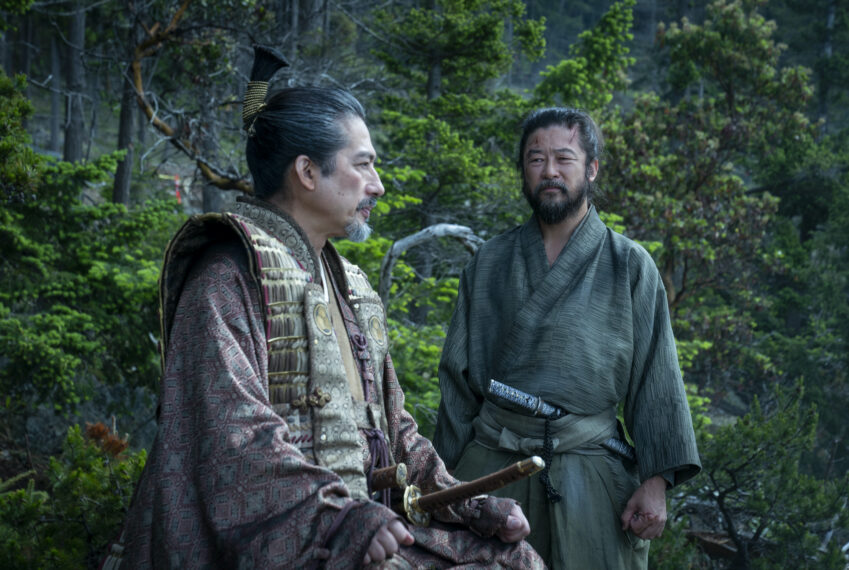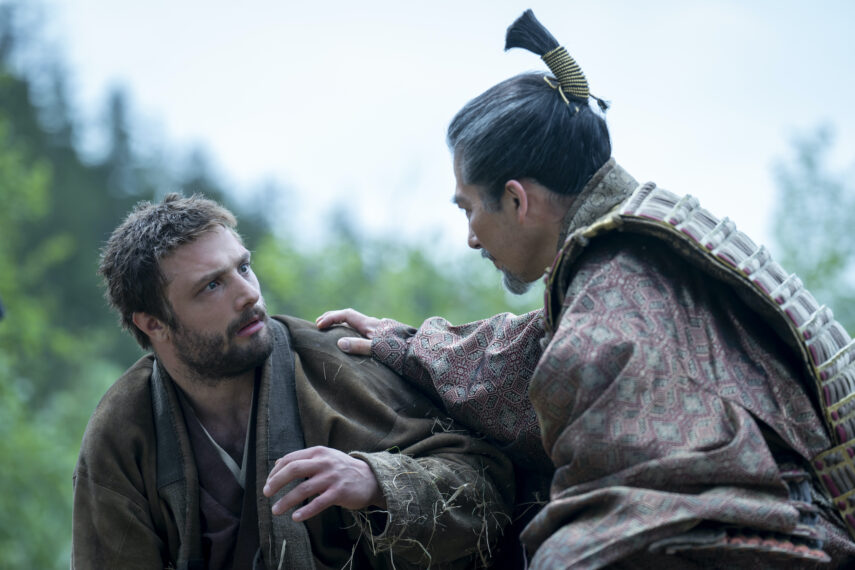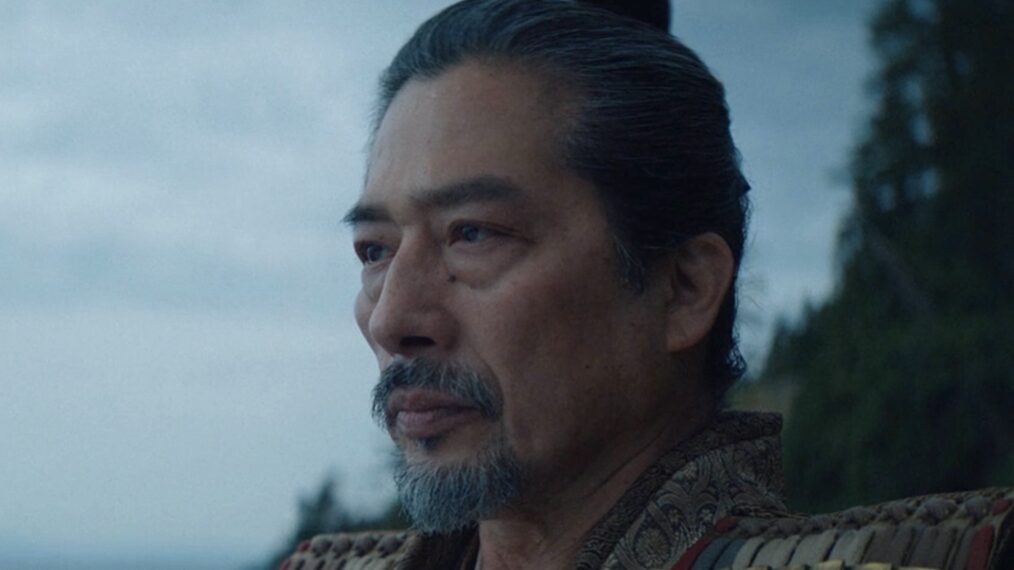Products You May Like
[Warning: The following contains MAJOR spoilers for Shōgun Episode 10, “A Dream of a Dream.”]
FX‘s Shōgun reached its thrilling conclusion in Episode 10, “A Dream of a Dream.” In it, Lord Yoshii Toranaga’s (the fantastic Hiroyuki Sanada) dream of a nation at peace came true, albeit at a steep cost. As he told Lord Kashigi Yabushige (Tadanobu Asano) in their final scene, “Crimson Sky” was already finished. He “sent a woman to do what an army couldn’t,” and through Mariko’s (the great Anna Sawai) sacrifice, the final pieces of his plan fell into place. Because of Mariko, he wouldn’t have to draw his sword in battle at all.
Sawai previously teased a moment of “revelation” in Shōgun‘s final scenes to TV Insider, and viewers now know what she meant. All this time that Toranaga spent denying that he wanted to be Shōgun (the military leader and de facto ruler of Japan), he was actually laying the groundwork to secure the title. Hiromatsu’s (Tokuma Nishioka) seppuku and the unintentional death of his son, Yoshii Nagakado (Yuki Kara), that bought him time were also key pieces of this puzzle. But it was Mariko who sealed everyone’s fates.
This was all revealed in a final conversation with Yabushige before he committed seppuku over his involvement in Mariko’s death. Sanada tells TV Insider he filmed the closeup shot of these lines, the most important of the series, in one take. There was no time to film it more than once.
“We had to finish shooting that scene [during] the day,” Sanada explains, because they needed the natural sunlight as it started to set. The “sun goes down,” and then it was, “Let’s shoot, let’s shoot!” he recalls.
They started with the frames where Toranaga and Yabushige’s backs were to the camera, but they “skipped the dialogue little by little” to save precious time and light. “Only on my closeup” did they film the eight-page scene in full, Sanada shares. “We did my whole lines only in one shot because there was a time limit.” Rehearsal helped him be ready for that one perfect take.

Toranaga reveals his plan in Yabushige’s final moments (Katie Yu / FX)
Toranaga is based on the historical figure Tokugawa Ieyasu, who, as Sanada says, “stopped the war period and then created the peaceful era” in Japan that started in 1603 and lasted over two and half centuries. This final scene with Yabushige was the ushering in of that period of peace in Shōgun. “That was an important scene for Toranaga and for me as well,” Sanada says. It came with the added bonus of filming Toranaga’s climactic moment with an old friend.
Like Toranaga and Yabushige, Sanada and Nishioka have known each other for years. They co-starred in the detective film Nemuranai Machi: Shinjuku Same in 1993 when Nishioka was 19, and they’ve worked together on five films total. Creating the Toranaga-Yabushige chemistry was a breeze. The frequent collaborators wanted to make something special with Yabushige’s seppuku, the last of many seppukus in the series.
“We wanted to make a difference between Hiromatu’s seppuku and Yabushige’s seppuku,” Sanada says. “Hiromatsu, he died in a very traditional, formal, very classic way. But Yabushige, Tadanobu wanted to show his character differently, even for seppuku.” Sanada adds with a laugh, “Just [by] sitting on the ground, committing seppuku quickly, and then smiling, he created a great original seppuku scene. I recommended him to create his own way.”
Building chemistry with Cosmo Jarvis (John Blackthorne) happened “very organically,” Sanada shares. As the finale reveals, the Anjin doesn’t leave Japan. Neither did William Adams, the real English pilot on which Blackthorne is based. Sanada says Blackthorne’s dream in the beginning of the episode, in which he imagined himself as an old man back in England, his sons questioning the “savage” artifacts he brought home from Japan, made Blackthorne realize he didn’t want to leave. Perhaps he couldn’t leave Mariko behind after he cast her rosary into the sea. As long as he was near that water, he’d be with Mariko forever. And so his fate would be forever tied to Toranaga.
Blackthorne saw his options as “getting old with his memories” or “to die now with bravery,” Sanada says. Inspired by Mariko, he chose the latter and asked Toranga to let him commit seppuku, as he’s at last learned that “living long is not the only way to be happy. Then, at that moment, Toranaga tested his capability, his mental strength.” Choosing death made him pass the test. Japan and Mariko taught Anjin-sama that “meaningful death is better than long life.” Toranaga doesn’t let him commit seppuku, but Blackthorne ends the series a man whose relationship with death has completely shifted.

Blackthorne begs for an honorable death from Toranaga (Katie Yu / FX)
This culture was accepting of death, but that doesn’t mean the losses aren’t grieved. Peace across the nation came at the price of losing the three people Toranaga held most dear. How does he cope with the deaths of Mariko, Hiromatsu, and Nagakado?
“All sacrifice,” Sanada tells us. “It’s sad, but like Toranaga said at the end of the eighth episode, ‘I don’t waste your life, your death. I will never waste.’ That is his mind.” Toranaga can cope with the losses as long as he knows that the deaths weren’t useless. His son’s accidental death was nearly a waste, but it bought Toranaga precious time to lay out his next moves. This time shifted the tide, allowing Mariko to travel to Osaka to gather the Edo women and confront Lord Ishido (Takehiro Hira).
“Even for Yabushige. Toranaga used him a lot and cannot believe him deeply, but he used that death to make a peaceful era in the future,” says Sanada. “Never waste, that’s the theme for Toranaga.”
Shōgun certainly never wasted one second of its time on-air.
Shōgun, All Episodes Available Now, Hulu
